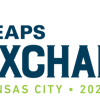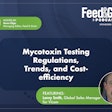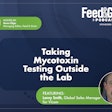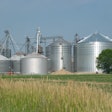Steven Kilger, host of theFeed & Grain Podcast, speaks to Kurt Shultz, senior director of global strategies,U.S. Grains Council(USGC), and Reece Cannady, assistant regional director for the Middle East and Europe, USCG, about this year'sAnnual Corn Harvest Quality Report.
Used to help market U.S corn to importers across the globe, the annual report takes samples from across the corn belt to get a picture of what should be expected from this years corn harvest. The podcast covers the methodology behind the report, and how it's used to raise interest in U.S. corn.
Transcription of Feed & Grain Podcast with Kurt Shultz and Reece Cannady.
Steven Kilger00:00
Hello everyone, my name is Steven Kilger, managing editor of Feed & Grain and host of the Feed & Grain Podcast. Today a bit of a special event. We have two guests joining me to talk about the U.S. Grains Council's recently released Annual Corn Harvest Quality Report.
Kurt Shultz, senior director of Global Strategies for the U.S. Grains Council, and Reece Cannady, assistant regional director for the Middle East and Europe at the USGC. They're nice enough to call in from Tunisia. But before we get into the conversation, I have just a little bit of housekeeping.
Steven Kilger00:31
如果你在podca听这个播客st app, please consider subscribing or leaving a review. It really helps us out. If you have an idea of a topic, you would like me to cover, or someone in the animal feed, grain handling, or related industries, who you think would be a good guest, let me know! I'd be happy to have them on. Just go to this podcast's page on feedandgrain.com. And there's a little button at the top right under the title that let you send an email directly to me. I'd love to hear from you ... about anything really. All right, enough of that. Onto the conversation itself.
Steven Kilger01:05
Thank you so much for joining me today, Kurt and Reece, you mind telling me and the listeners a little more about yourself and what you do with U.S. Grains Council?
Kurt Shultz01:13
Sure. My name is Kurt Schultz, I'm the director for global strategies with the U.S. Grains Council. I've been in engaged with the Grains Council for over 23 years. And my focus is really on the international customers and how we can promote US corn, barley, and sorghum and CO product exports. And so, it really is trying to be that bridge between the farmer/producer, agribusiness members and our international customers.
Reece Cannady01:45
Yeah, I'm Reece Cannady. I'm our assistant regional director for the Middle East and Europe. Formerly I was stationed in Washington, DC and was the manager of Global Trade where I did a lot of our economic analysis and provided a lot of context for what was going on in the market to our overseas offices. Now I'm in an overseas office in Tunis, Tunisia, is where I'm stationed working on Middle Eastern markets and European markets and certain markets in Sub Saharan Africa.
Reece Cannady02:10
Depending on the country, the work looks a little different. To go to Europe, it's more sort of governmental issues, market access issues. Then go to the Middle East, there's a little more development that could be done more technical trials. And then if you go down into Sub Saharan Africa, things get a little bit more sort of base level development and diet evolution, let's say that's kind of where I stand with the council. But I give context about being manager of Global Trade, because, as you know, we'll talk about the corn quality rollout and, and it was something that worked through the Corn Quality Report. And it's something that I worked on for quite a few years, and I'm quite familiar with. And it's a great report that Kurt's put together some time ago.
Steven Kilger02:48
A lot of people listening might not quite know what the U.S. Grains Council does, can you give us a little bit of its history, and what the organization does as a whole.
Kurt Shultz02:59
Yeah, let me jump in here and just say that the U.S. Grains Council was formed in the 60s, its mission is to develop markets internationally, for U.S. grain producers, and to really promote the export of these grains. And so that happens in many different ways. And we kind of have three pillars of programming that we work in. We work on issues, such as trade policy, breaking down governmental barriers, or restrictions that might inhibit the export of us grains to the market.
Kurt Shultz03:31
We do development programs, as Reese was alluding to, and in countries such as Sub-Saharan Africa, but we do that across and historically have done that across the world. We were very much involved in helping develop the Asian livestock industries and more recently, the livestock industries in North Africa and Southeast Asia. So, the idea that development of these sectors happens, they're looking for grains that will help efficiently feed a growing livestock industry that ultimately benefits the consumers with cheaper meat protein. The final part is the marketing component. And the Harvest Quality Report that we're going to talk about is really a marketing document. It's really updating the markets on the latest information on the U.S. corn quality, but we do marketing symposiums around the world. Whether in the United States, where we bring international buyers or we do them in countries to really introduce agribusiness members and US producers to our international customers.
Kurt Shultz04:32
Let me wrap back on one other item which was who are our members. Our members are composed of corn producers who are represented through their state associations, most commonly the state checkoff. So, Corn Checkoff or Barley or Sorghum Checkoff will become members of the U.S. Grains Council because they're interested in seeing and building markets for their grains.
Kurt Shultz04:56
So, it starts out with the producers but then we also include agribusiness members in the value chain, from seed companies all the way to grain exporters, who are a part of this industry that are very much interested and being engaged in the international market. We are the organization that kind of encapsulates that whole umbrella of diverse interests into one single organization.
Steven Kilger05:23
Well, that's great, because we need someone out there advocating for us. Contrary to popular belief, right, it doesn't sell itself. You guys have done great work. And we've actually been following U.S. Grains Council. For listeners interested, they have a long standing, I think it's been three or five years now a actual column in Feed & Grain. And it's because of what you're doing out there. So important, as you guys have alluded to a few times now, you guys recently launched the Corn Harvest Quality Report, which you do every year, that kind of goes over, while the basically the state of the last year's harvest for the world. Can you tell me a little bit more about the corn harvest Quality Report, and how you put it together?
Reece Cannady06:03
The history of it, you know, Kurt may have to touch on the history a little better, because it was sort of his brainchild some 12 years ago. And this is our 12th report this year. It's a tool that we put together where we contracted with a consulting firm that sends out what we call kits. These kits include plastic bag to take a sample, they include sampling instructions, and prepaid postage back to the lab, that station in Urbana, Illinois. So, what they did this year, they sent out 600 kits, we got 600 samples back from strategic areas around the US. So, when you look at some of the corn that might be grown in West Texas, for instance, none of that really goes to export. It's all fed right there at the local feedlot industry. And so, we don't collect any samples for West Texas. And that's just an example. There are quite a few other examples I could give.
Reece Cannady06:50
But across the Corn Belt, we're collecting samples, and we're dividing them into what we call export catchment areas. Certain areas may spread well to Mexico and other areas, particularly the Dakotas and Minnesota and western Nebraska spread very well to our Pacific Northwestern ports. And then when you look at the majority of the Corn Belt, it uses our river system and goes out through the Gulf to New Orleans. So based upon planting intentions for the year and acres planted via USDA data, they strategically send out a number of kits to different Agricultural Statistical districts or ASDs around the country. From there, they collect samples, they bring them in. And we test that a number of things. So I think obviously, when you talk about domestic trade, many people look very regularly at USDA number one versus number 2, 3, 4, 5, down the sample grade. That's very common. But we're also looking a little deeper in the chemical composition. So, some of our international customers care about the protein content and corn, which I know may sound weird to certain grain processors in the US. But it's certainly a reality for some of our international customers, we look at true density, we might look at hard endosperm corn for people who are making snack foods.
Reece Cannady07:58
So, we just have so many customers around the world that are so varied and have so many varied interests, it requires us to kind of look at quite a few different things. And then the last thing we test, and this is something we've been adding on to in recent years has been mycotoxin. It's an increasing concern from international customers, not just for U.S corn, but for other origins as well. So, we provide them with some information on that, as well.
Kurt Shultz08:22
Let me just add to what he said, which is the report is really intended to focus on our international customers. It's not necessarily to be a complete, comprehensive a report that might reflect some of the domestic users. It's really the point of first sale where moves off the farm to an elevator and that that elevator theoretically then feeds into our export catchment areas. It also is an early indicator we follow up this report later this year with an Export Cargo Report which is really sampling the grain at the export elevators. All this data is just intended to give our customers internationally an eye perspective of the quality how does it relate to previous years, the five-year average being an example. But how does it relate to that as an indicator and so that helps them have some confidence as they start to purchase the U.S. corn crop.
Steven Kilger09:18
It's for international. I also like it mainly because it's a lot nicer to read than some of the USDA reports. So from that standpoint, I personally love it even though I am in the domestic market. To the meat of it. So how does the 2022 corn harvest compare to past years? How are we looking in this year's corn crop?
Reece Cannady09:40
We had a good harvest I think all things considered, you know, things looked pretty good. I mean test weight was on par with what we're used to seeing and past year so it's 58 and a half pounds/bushel it's Number One Corn, and Kurt talked about how we have the export cargo report. Again, this is the Harvest Report. So, this is all point of harvest. So, it's not it's not import and export.
Reece Cannady10:00
So, we will see a lot of number one metrics here, coming off the farm. One thing we saw this year that's kind of unique to other years is a much lower damage number. So sometimes, particularly in a wetter year, we might see some mold build up there in the field, and we'll see some damage numbers be a little bit greater. This year, damage was very low. So, no problems there. Moisture was about on par with what we usually see, we saw a little bit higher protein in the corn just ever so slightly, just coming in under 9%. At 8.8%. starch content was a little bit lower. But we can talk about us starch content versus other origins in a moment. But it was a little bit lower than we've seen in the past, but still hovering around a 72%, while oil is at 4%. And one other thing that really stood out was the horny endosperm, or the hard endosperm corn. Normally we see about 81% of US corn be hard endosperm, this year was 88%. So, there was there's a significant jump between this and the five-year average of 81%. And really, we've never seen a number this high. So, you know, a lot of that has to do with the seed type that people are planting. I can't necessarily get into the specifics of why. But that's really what we saw kind of jumped off the page this year.
Steven Kilger10:03
All right. Well, Reese, you told me, you were gonna tell me about starch.
Reece Cannady11:21
哦,当然。我的意思是,我们谈论美国,这是,this report is something that other people don't have any other origins. This is a report that other origins don't have. And so, it's of great value to our international customers. And it's something that allows for them, to have an idea of what's coming off the field, you can see a lot of different things from news articles that may talk a certain way. But it's a different thing when you have hard data that's taken consistently. And it's just very blunt, its very frank data, there is nothing, nothing other than what we have observed in this report. We're out here marketing, the U.S. advantage. This is one way that we do it. And another way we do it is via starch content, we've, we've talked about, you know, starch content in the U.S. is roughly the same as other origins there, it's a very similar amount of starch. However, its accessibility is higher. And that goes not only for feed milling, but also for wet milling, where that is the name of the game. So, it's the seed technology we have in the US is just ahead of a lot of other origins. And its ability to perform. And it's a lot of that, I think is due to the ethanol industry, the ethanol industry has been about extracting starch. And so, folks have been sort of engineering their seed to sort of fall in line with the ethanol industry. It's really interesting, actually. So that's one of the advantages kind of U.S. corn has over our competitors.
Steven Kilger12:46
What other advantages does U.S. corn have?
Reece Cannady12:51
Well, I think, traditionally speaking, we're pretty low mycotoxin crop. Some years, we do see vomitoxin, or DON pop up in certain parts of the Corn Belt because it's just a little wet. This year, we saw there's been some articles and some news reports about U.S. crop having unusually high in Vomitoxin. That's not the case this year, or at least our data suggests that vomitoxin has been at a fairly normal level as we've observed over the past 12 years. So very favorable on the mycotoxin side of things, we don't tend to see a lot of that. Whereas in other maybe hotter countries, we'll see more aflatoxin spread.
Reece Cannady13:26
外,你需要看看美国作为一个system. I need to look at our logistics system and how it performs and is superior to other origins. There are many reasons why ports get shut down around the world. But I can't remember the last time other than a natural disaster that a U.S. port was shut down that moves grain. So, you know outside of the occasional hurricane, we have a very reliable logistics system and even if New Orleans is shut down, you can move to the p&w we have ports on the East Coast that load boat grains, we have container options for shipping, which people do buy containerized corn in the export markets. We have a lot of that going on. And lastly, it's transparency. We have the USDA federal grade inspection service that provides grades, it's a third-party service, we have all the inspection agencies that you could desire that provide grading services, that the transparency of our system is far greater than you'll get anywhere else in the world.
Steven Kilger14:22
然后你们怎么”的使用nformation then to sell us corn to the world? What do you guys do to market it?
Reece Cannady14:29
是的,这就是一个给定的在这一点上the Grains Council have many offices around the world and at all those offices we host what are called corn quality rollouts. Sometimes it's just in one location. Many times, particularly for our regional offices. It's what we call a road show where they will go country to country and city to city and they will bring outstanding farmers from the U.S. They'll bring agribusiness to conduct business while they're there. And we'll present about the crop. And we'll also talk about other things how to use DDGs and animal dietary risk management if that's needed. We get our members involved. And we have our farmers talk about their farming practices and brings them more familiar touch to U.S. grain. It's something that our, our international customers like to hear. They want to hear how old your farm is and how many generations it's been passed down. These are good stories to tell. So, it's a given every January that these rollouts are going to happen. So, first of the year, I'm sure there will be plenty of news articles that come out about U.S. Grains Council going around the world to promote this information.
Steven Kilger15:30
Yeah, I'd love following those stories. I've seen a few where first you have the kind of day in the office thing, right, and then you go out, you go to the feed mill, you go to the grain elevator, you go to the farm, they look like they actually look kind of fun.
Reece Cannady15:43
They can be but I'll tell you they are they're very tiring. And folks, they learn a lot. It's always great for them to come back and talk to their board, their farmers, and their area. And tell them about what they learned because there is knowledge sharing that happens at these visits that really can't be replaced via Zoom meeting or anything else.
Kurt Shultz16:01
Yeah, and I would just add the recent comment that it is a relationship building, I mean, a relationship business. And so, it's really important for those face-to-face conversations, whether it be between buyer and seller, but it's also I think our international customers appreciate hearing from our farmers about their production practices, and the challenges that they face. And getting that assurance that they are just as vested into the domestic market as they are into the international market.
Steven Kilger16:31
太好了。我对你们最后一个问题是how can our listeners get involved in support the U.S. Grains Council and your mission to market U.S. corn and other crops to the world?
Kurt Shultz16:46
Let me jump in here. And I certainly will let Reese add some comments at the end that I missed. But you know, one of the things that I think is really important from our agribusiness members is that this is a voluntary participation from our agribusiness members to send samples in for analysis. And we certainly can't do it without their help, you know, so those local elevators that are sending their samples into be consolidated into a global report is the foundation of the work that we do. So, from that perspective, we certainly appreciate that because it's it allows us to have credibility that we are, you know, representing a broad swath of the United States and a broad swath of the U.S. corn belt in our report.
Kurt Shultz17:30
Secondly, you know, we are funded in our membership comes from the states. We don't do anything if, we get some funding from USDA but without the support of our Corn Checkoff, Barley and Sorghum checkoff, and our agribusiness members, we can't do the work that we are doing in the international market. And so from a corn producers side, get involved with their state associations, there are domestic focused organizations and their international organizations, such as ourselves, that are out representing U.S. producers. If you're an agribusiness, we invite you to join our membership because we are out interacting on a daily basis, 365 days a year, with your international customers. And so, it gives you really a window to the world and a perspective of what they're thinking and the opportunities that exist in the international market. So, there are a number of different ways, certainly reach out to our DC headquarters, if you're not sure and talk to our membership, and see if there's a role that you can play within the organization because ultimately, we are a member driven organization and without members, we cease to exist.
Steven Kilger18:40
Thank you so much for speaking to me today, guys. And of course, thank you so much for listening. I hope you enjoyed the podcast and hope you'll be back for the next one. Until then, stay safe out there.

.jpg?auto=format%2Ccompress&crop=faces&fit=crop&h=48&q=70&w=48)


















